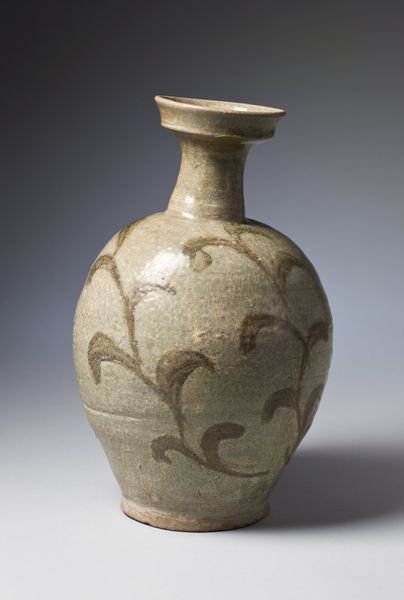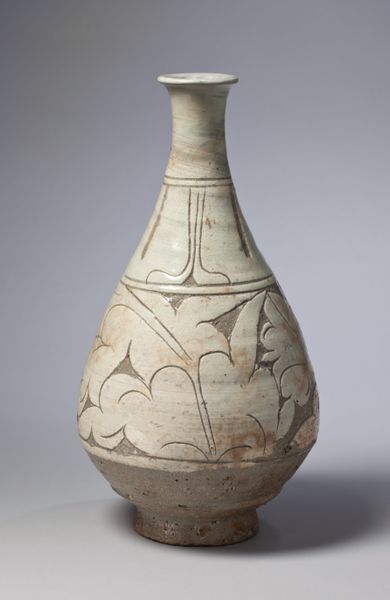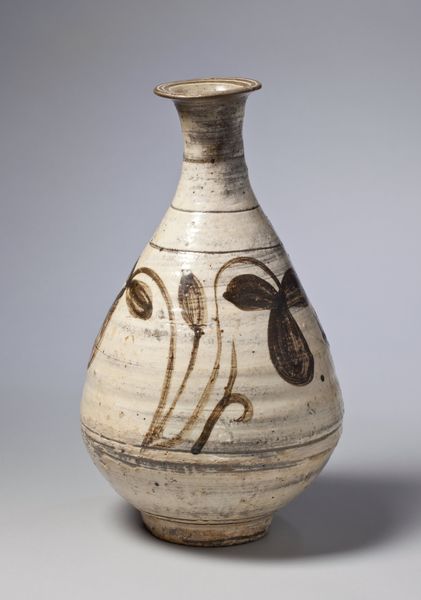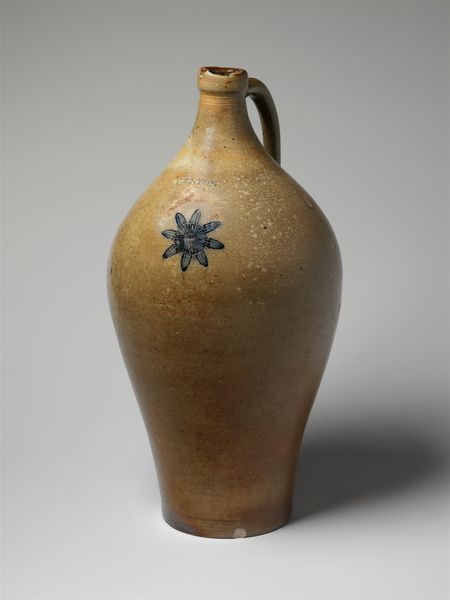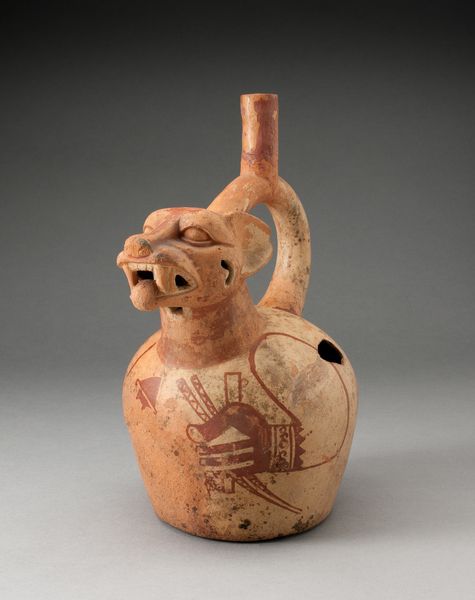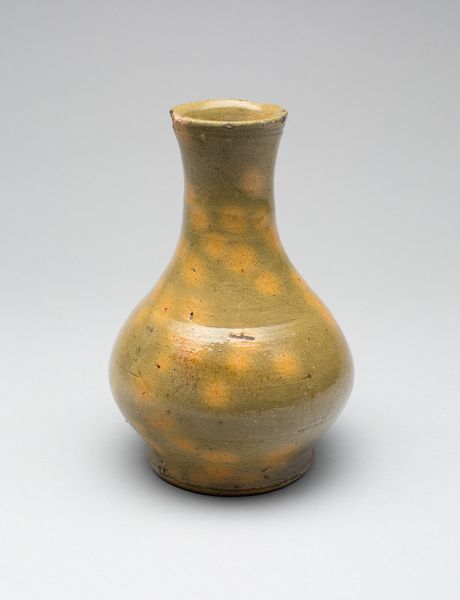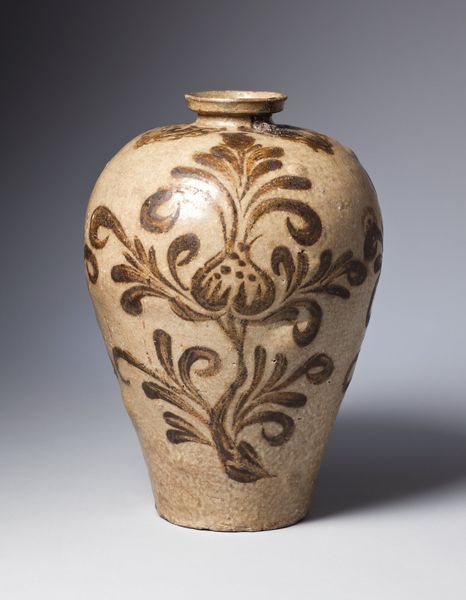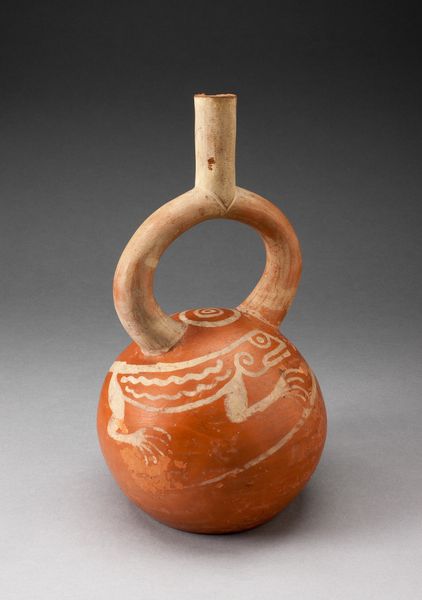
ceramic
#
medieval
#
asian-art
#
ceramic
#
ceramic
Dimensions: 10 9/16 × 6 1/8 × 6 1/8 in. (26.83 × 15.56 × 15.56 cm)
Copyright: Public Domain
Curator: This unassuming bottle possesses an elegant charm. Let's discuss this ceramic "Bottle with leaves" created circa the 11th century. It’s currently held in the collection of the Minneapolis Institute of Art. What strikes you initially? Editor: Well, my first impression is one of tranquility. The muted earth tones and simple, almost understated design create a sense of peace. There's a definite emphasis on function over elaborate decoration. Curator: Precisely. Ceramic production of this period reflected deeply entrenched social hierarchies and artistic innovation was frequently tied to patronage and political maneuvering. Though unsigned, pieces like this demonstrate the value of functional artistry among both makers and recipients. These aren’t mass-produced; each possesses an individual, hand-crafted quality. The seemingly casual brushstrokes belie remarkable control. Editor: It speaks volumes about cultural values, doesn’t it? This ceramic is also evidence of sustainability practices in Asian-Art. Why create disposable vessels when functional wares were beautifully executed and accessible? This emphasis contrasts drastically with contemporary hyper-consumerism, urging introspection about our relationship to the objects we value. Curator: The delicate leaf pattern is interesting. Its stylized representation of nature reveals a certain degree of human intervention in even natural forms. A cultural mediation shaping the reception and integration of visual experience. How can the leaves' rendering invite conversations regarding identity or symbolism? Editor: Considering the organic motif of stylized leaves, they are reminiscent of freedom and renewal, mirroring women’s journey of healing. They seem like deliberate marks, symbolic expressions and a kind of silent advocacy resonating with cultural values of simplicity, respect for nature, and a sophisticated sensibility that honors women's experience in art-making and meaning. Curator: Indeed. Its value stems from what it represented: a humble, necessary object elevated through skillful craftsmanship and subtle design. This bottle exists not merely as a relic, but as a lens through which we understand values, tastes and aesthetics from a different moment. Editor: Right, and examining this bottle invites crucial reevaluations about consumer culture that surrounds the artwork production today. Let's hope it promotes some contemplation about sustainability too.
Comments
No comments
Be the first to comment and join the conversation on the ultimate creative platform.
